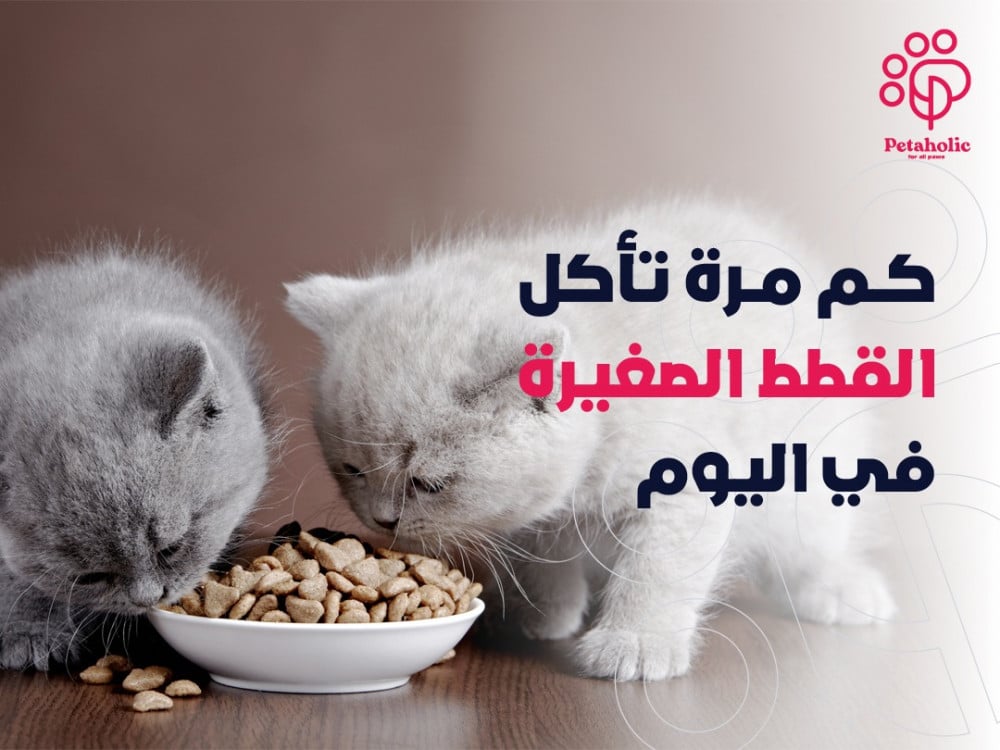
Kittens begin life with a small stomach, the size of a human thumb. However, their bodies develop at such a rapid rate that they require different amounts of nutrition during certain developmental stages. In this guide, we answer some common questions cat owners have about how many times a day kittens eat and how much wet or dry food to give them. We also provide you in our store with all types of food and its supplies in one place at the best prices.
How many times do kittens eat per day according to each age?
In search of an answer to the question: How many times do kittens eat a day? We find that from the first few weeks of a cat's life until they are four months old, their metabolism is at an all-time high as they continually grow and consume greater amounts of nutrients. It is almost impossible to overfeed your cat during this time. However, keep in mind that feeding kittens should be done frequently but in small amounts throughout the day, so as not to overload their little stomachs with food. Below is the appropriate and healthy frequency for cats at each age.
Newborn up to 7 weeks
From birth until they are seven weeks old, kittens must get a lot of nutrition from their mother's milk. As long as their mother is eating a healthy diet, kitten milk is the best food for kittens during this period. But if the mother is unable to feed the kittens during this time, you should feed the kittens about eight times a day at regular intervals, using kitten milk from a small bottle. Be careful not to replace cat milk with cow's milk intended for humans; Because cats have difficulty digesting lactose.
At two weeks old, your kitten's baby teeth should start to emerge, and after three to four weeks they may want to try bites of solid food, and this is a good time to introduce them to the food bowl.
From four months to six months
At four months old, a kitten is growing rapidly and requires more energy from its food. So increase the packets of wet cat food to two and a half to three packets per day, and reduce the number of meals per day to four or five. When feeding kittens a mixed diet at this age, reduce the amount of wet food to two bags, and give fifteen to twenty grams of dry food to your kitten.
Six to 12 months
From six months, your cat's growth rate slows, which means its nutritional requirements change. The number of meals per day can be reduced to two to four meals. Feed your cat three bags of wet cat food daily. On a mixed diet, feed her only two bags of wet food and 20 to 25 grams of dry cat food.
Among the special types of food that we provide for kittens at Petaholic, we recommend to you:
How often do kittens eat dry food? Can we rely on him alone?
Given that kittens' teeth are small and soft, it may be difficult for your kitten to eat only dry food. Cats have two sets of teeth: baby teeth and adult teeth. Their baby teeth begin to appear at two weeks of age, and fully appear at eight weeks of age. At four months of age, adult kittens' teeth begin to emerge, and they should be fully developed by about six months.
While dry food has advantages such as being easier to serve, does not spoil as quickly as wet food, and helps remove dental plaque from adult cats, it also has disadvantages. For example, cats often become dehydrated because they don't think about drinking as much as they should. All cats have different food preferences, including preferred textures and flavors. So if your cat prefers dry food, you can feed her a dry diet, as long as you make sure she gets the right amount of moisture her body needs, and you should know how many times a day kittens eat dry food.
For cats 2 months of age and older, we recommend that cats get two-thirds of their daily calories from their wet food, and one-third from dry cat food. However, if you prefer to feed your kitten only dry food, always make sure it has drinking water, and it should not be fed more than 3 times a day. To make dry food easier and more attractive to eat, mix it with a little fresh water, and heat it slightly to make it softer and release the aromas. It's also a good idea to mix in a little fresh water if your cat isn't drinking enough from his water bowl.
If you want the best dry food for your kitten, we recommend:
What exactly should you feed your cat?
Your kitten's nutritional requirements will be different from the nutritional requirements of an adult cat. To help a cat grow healthy and strong, her food should usually contain:
- High levels of animal protein.
- More calories.
- Higher amounts of some nutrients, such as calcium and phosphorus.
Your cat likely has tons of energy and engages in noisy play. Therefore, she needs high-calorie food to support her body, which burns calories while playing and also consumes energy in order to grow.
Wet and dry cat food are commonly available as staple foods for cats, and there are pros and cons to each. To determine which option best suits your cat's needs, talk to your veterinarian and get his or her recommendation. Here are some pros and cons of each:
- Wet food: It has a high moisture content, so it can be helpful in keeping cats hydrated and urinary tract and kidney healthy. However, wet food tends to stick to the teeth more; Which may be linked to painful dental diseases in cats.
- Dry food: It is easy to feed to cats, and it helps in scraping tartar from the teeth. However, some cats can overeat dry food and gain weight, which can be associated with arthritis, heart problems, blood pressure or respiratory problems, or diabetes, to name a few.
Among the special types of wet food we offer at Petaholic, we recommend for your kitten:
By the end of this guide, you'll know all about how much food your kitten should eat daily, and how often you should feed her, in order to provide your growing kitten with a healthy, balanced diet. You will also find in Petaholic all types of dry and wet food and various types of food supplies at the best prices.
Read also:-

